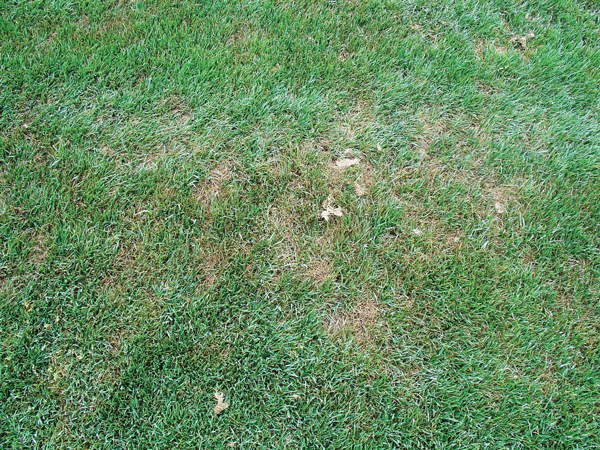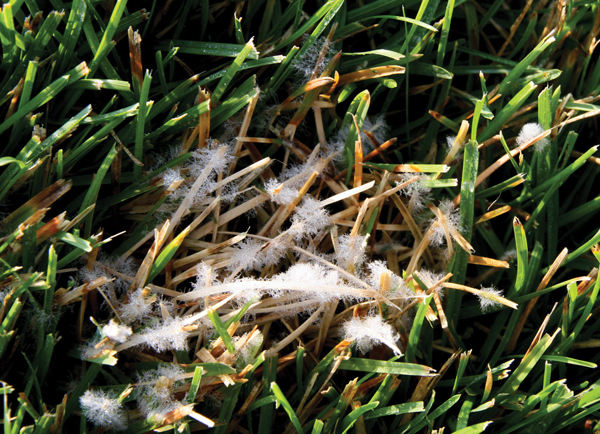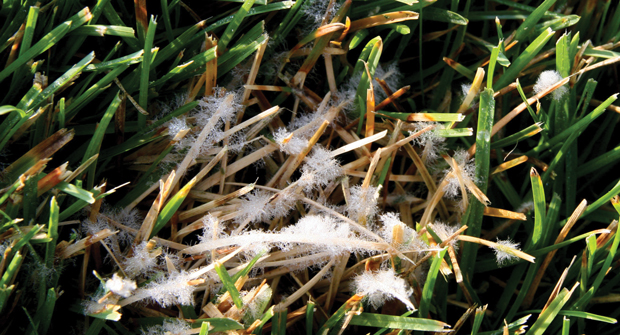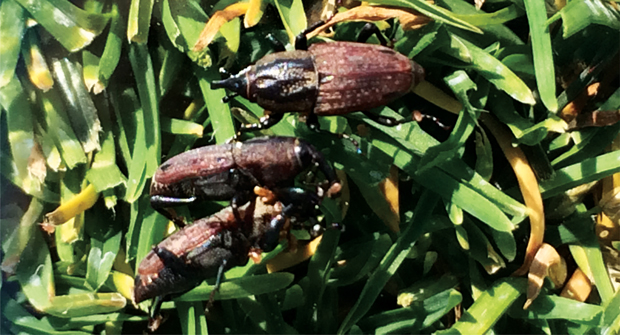
Dollar spot is perhaps the most economically important disease in turf management in that more money is spent controlling it than any other turfgrass disease in the industry, according to Paul Giordano, Green Solutions Team member at Bayer.
Luckily, that means the disease receives a lot of attention, and a lot of research goes into successfully controlling it.
Symptoms: Dollar spot typically starts out as smaller 2- to 3-inch patches of turfgrass with bleached or tan-colored lesions on individual leaf blades. The lesions resemble an hourglass shape. In time, the half-dollar-sized spots on the lawn can coalesce to form larger patches within a lawn.
Often, the disease is accompanied by mycelium, a cottony, stringlike fungal body, according to Anthony Goldsby, research agronomist for the professional products division for The Andersons.

For the disease to crop up, only three conditions need to be present: a pathogen, a favorable environment and a host, Goldsby says.
The disease doesn’t discriminate by region and can appear in a wide variety of turf types — including Kentucky bluegrass, fine fescue, perennial ryegrass, annual bluegrass, St. Augustinegrass and tall fescue — as long as the conditions are favorable.
“Other than maybe the desert southwest where it’s just too dry, you’ll pretty much see dollar spot on all turf species as well as all climates across the country,” Giordano says, adding that it tends to favor cool-season turf.
Dollar spot is most prevalent between May and October, when daytime temperatures are in the 80-degree F range and nighttime temperatures are between 60 and 75 degrees F with high levels of humidity.
Predictive tools, such as the Smith-Kerns model developed by the University of Wisconsin, can help lawn care operators (LCOs) calculate when conditions are most favorable for the disease.
“It gives you a threshold scale and warns you of when you should be doing preventive applications when the conditions are most favorable,” Goldsby says.
Treatment: Dollar spot is most severe in malnourished or underfertilized lawns, so it’s crucial to regularly make fertilizer applications.
Giordano recommends 2-4 pounds of nitrogen per 1,000 square feet annually for most cool-season lawns. “Make sure those applications are being made on a fairly regular basis so you have consistent feeding of the plants throughout the year,” he says.
Goldsby suggests LCOs use a product that’s available in at least 50 percent in slow-release form. He also advises avoiding nitrogen applications during the peak summer months when temperatures are too high.
Another way to reduce the risk for dollar spot is to limit the amount of time the surface of a lawn stays wet by timing irrigation appropriately.
Finally, LCOs also can apply fungicides on a 21- to 28-day basis for successful control and recovery.


